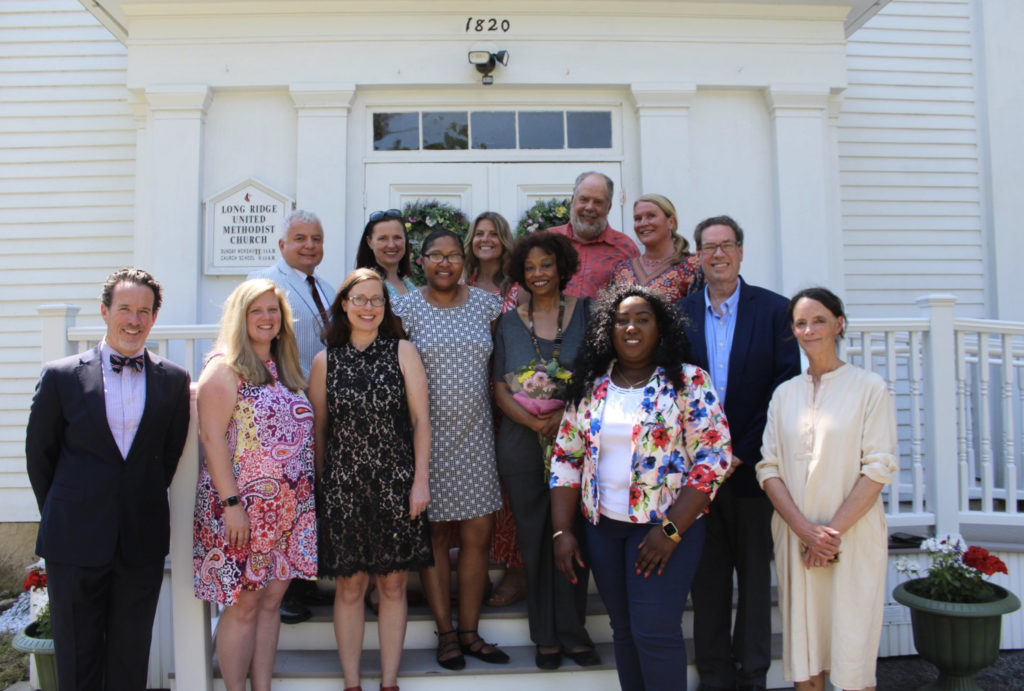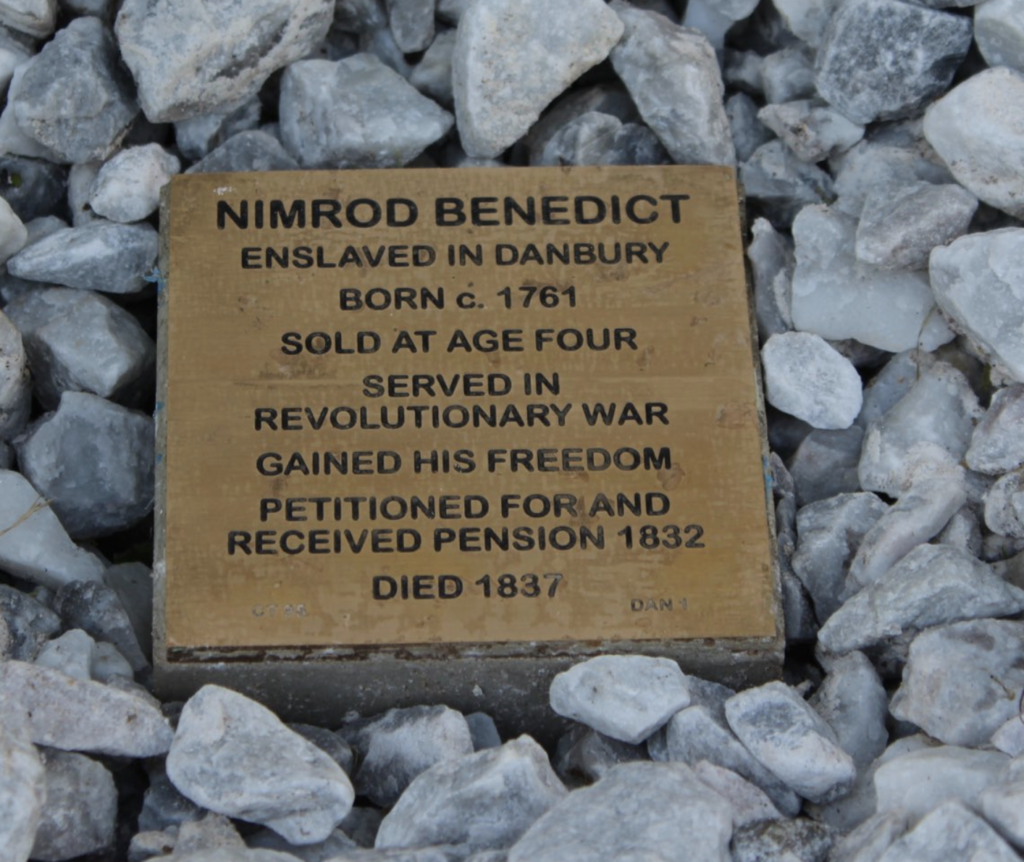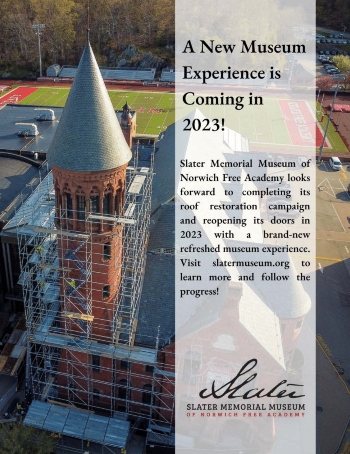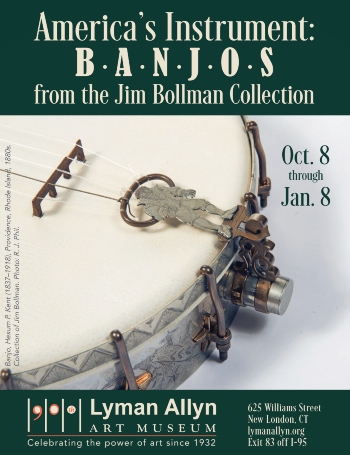By Dennis Culliton
(c) Connecticut Explored Inc., Winter 2022-23
Subscribe/Buy the Issue!
When I was a child growing up in southern Massachusetts I was fascinated by New England history and curious about the colonial and early American houses that surrounded me. I would close my eyes and try to imagine the lives of the people who lived in them. I could conjure up the Puritans and the early English, Scottish, and Irish immigrants. Sometimes I would try to imagine the lives of the Nipmuc people who preceded them on the land. But I was never taught about, nor did I ever imagine, the enslaved men and women whose lives were just as inextricably woven into New England history and the history of my hometown.
When I became an eighth-grade U.S. history teacher in Guilford, I brought my love of local history. If you’ve ever been to Guilford you know that it looks like a Norman Rockwell painting. An austere white Congregationalist church has pride of place in the center of town. Its 16-acre green is ringed by four churches, the town hall, a family-owned hardware store, and a local market. The neighboring streets are lined with carefully-preserved 18th- and 19th-century houses. Guilford is what nostalgic New England looks like in our mind’s eye.
As a teacher, I began to understand that the lives and stories that had been missing from my own early education were still missing from my students’. How could my students understand the early history of their country if I couldn’t help them create a fuller picture? That history must include the reality of slavery in New England and must chronicle the lives of the enslaved as well as the enslavers.
I loved regaling my students with stories about abolitionists such as John Brown, who was born in Torrington, Connecticut, and Harriet Beecher Stowe, who lived in Guilford. Although the story is likely apocryphal, President Abraham Lincoln is said to have described Stowe as “the little woman who wrote the book that started this great [Civil] war.” She lived in a household served by African American captives during her childhood. Her biographers, however, generally offer only sidelong glimpses of the enslaved men, women, and children she moved among. In his The Life of Harriet Beecher Stowe (Houghton, Mifflin, and Company, 1890), her son Edward Stowe described how “when Harriet visited her aristocratic relatives in Guilford and was taught the catechism by her Aunt Harriet (Foote), black Dinah, along with Harry, the bound boy, ranged at a respectful distance behind her, was taught also.”
In Autobiography, Correspondence, etc., of Lyman Beecher, edited by Charles Beecher, (Harper & Brothers Publishers, 1866)( Stowe’s father the Reverend Lyman Beecher laments the hardships of the Revolutionary War and confesses that his household would have been ruined if they had owned slaves and were required to pay taxes on them at the time. He mentions the enslaved only in passing, recalling one man named Moses who “remained a slave because he was king.” The lives of Dinah and Harry and Moses were not enlarged upon in Beecher’s papers or elsewhere.
I was frustrated by the paucity of information about the enslaved in these narratives, so I began my own research. I found hundreds of documents in local archives, and in 2017 I wrote a monograph Slavery and Freedom in Madison and Guilford, Connecticut for the Guilford Free Library’s history series. Still, I struggled to bring the local story of slavery to my students. The documents often fell flat when shared with students. What was the meaning of one woman’s “second emancipation,” if students didn’t know who she was? What was the significance of the purchase of a “negro boy” in Boston in 1727 by a David Naughty of Guilford? I was challenged by the weight of the research collected, not knowing how to bring the evidence to life.
In December 2016 I presented some of my research to a community audience at the Guilford library. In the audience, my friend Doug Nygren listened intently as an idea began to form in his mind. Nygren had been struck by how the German people wrestled with the historic crimes and trauma of the Holocaust. One result of that reckoning was the Stolpersteine, literally “stumbling stones,” project created by artist Gunter Demnig in 1992. Stolpersteine are permanent brass and concrete markers that are set in the pavement in front of the last homes of victims of the Nazis’ genocidal persecution.
Nygren wondered whether that German idea might translate to our local situation. This idea became the Witness Stones Project, whose mission is to restore the history and honor the humanity of the enslaved individuals who helped build our community. With Demnig’s permission, over the next few months Nygren and I began developing a way to use the Stolpersteine model to identify and honor the hundreds of enslaved individuals who had lived and worked in Guilford.
My students discovered, as I had, that the histories of these men and women were recorded in the property titles, probate documents, and birth and death records archived in their own town hall on the green. They realized that these enslaved men and women lived and worked within the antique houses and churches that the students pass every day. Most importantly, the students learned to tell the stories of these men and women and children whose voices had been silenced, whose marks had been erased, whose presence had been hidden.
The first Witness Stones Project was completed by my eighth-grade students at Elisabeth C. Adams Middle School in the autumn of 2017. The students had recovered the history of Moses, the “king of the slaves” alluded to in Beecher’s autobiography. The students had seen and read the indenture document that bound Moses to the Reverend Amos Fowler, “to serve him from the day of the date hereof during the whole time and term of the natural life of the said Moses, and until his death.” The students then brought their community together to place the Witness Stone in front of town hall, where Fowler’s house had stood and where Moses had been held captive during his lifetime. While the town’s first selectman, its Connecticut state representative and senator, the lead minister of the Congregational Church, and members of the public witnessed, the students honored Moses’s life and labor with music, essays, and reflection. Since 2017 the Witness Stones Project has partnered with 86 schools and civic institutions and has reached more than 12,000 middle- and high-school students in 45 communities across five states. Students have restored the history and honored the memory of 126 individuals.
In June 2022 students in Woodstock, Connecticut began working with the Witness Stones Project. As a teenager, I worked harvesting and baling hay in the fields in and around Woodstock. Never could I have imagined then that someday I would return with students to honor the life of a man named Cesar who toiled in those same fields. Cesar was born enslaved in 1784 in the Samuel McClellan home. In 1803 he self-emancipated and gained his freedom. On that day in June Cesar was honored with essays, poems, and music, and the students were rewarded with a more complete understanding of American history.
Dennis Culliton, M.A.T., C.A.G.S., is the Founder and Executive Director of the Witness Stones Project. He served in the U.S. Marine Corps before attending college at the University of Massachusetts, where he received degrees in anthropology and economics. After a decade working for the federal government, he went on to Quinnipiac University, graduating with a Master of Arts in Teaching in history. While in his third decade of teaching, he started the Witness Stones Project with his students in Guilford, Connecticut.
Correction: in the printed version of the magazine, we misspelled the German word “stolperstein” (plural: stolpersteine). We regret that error and have fixed that error in the online version.




